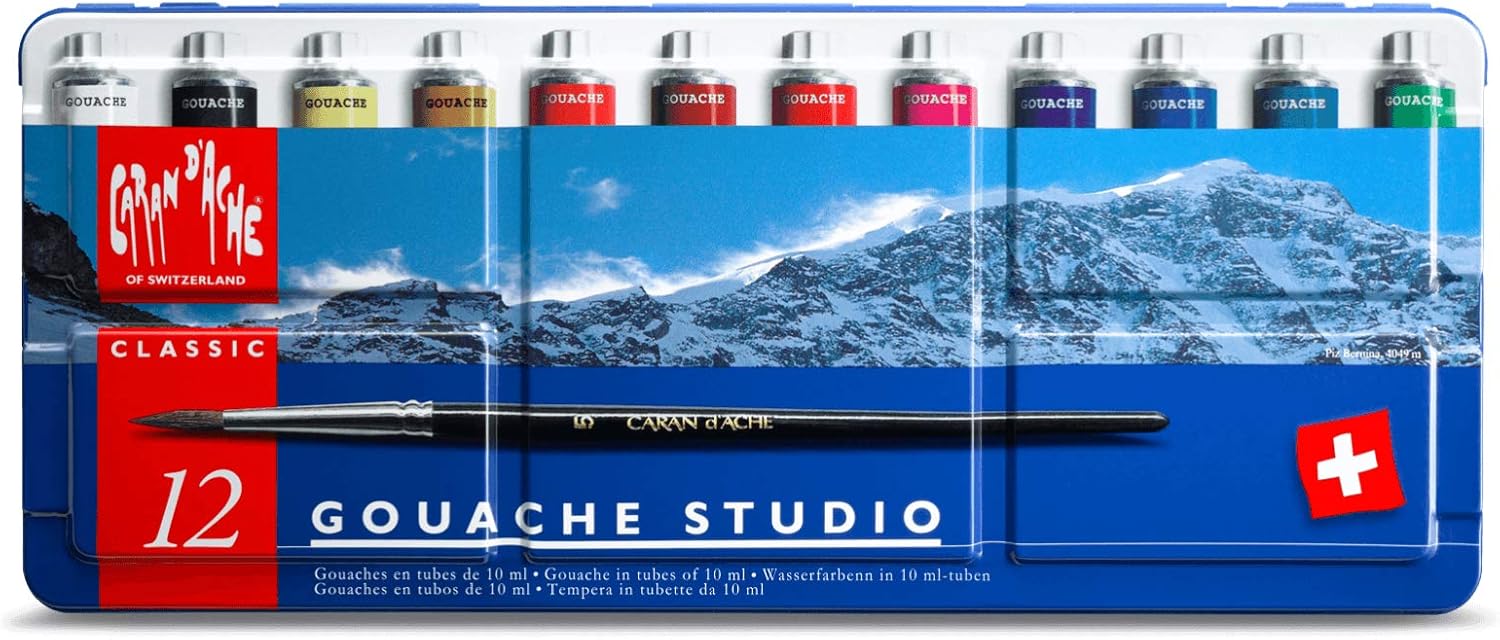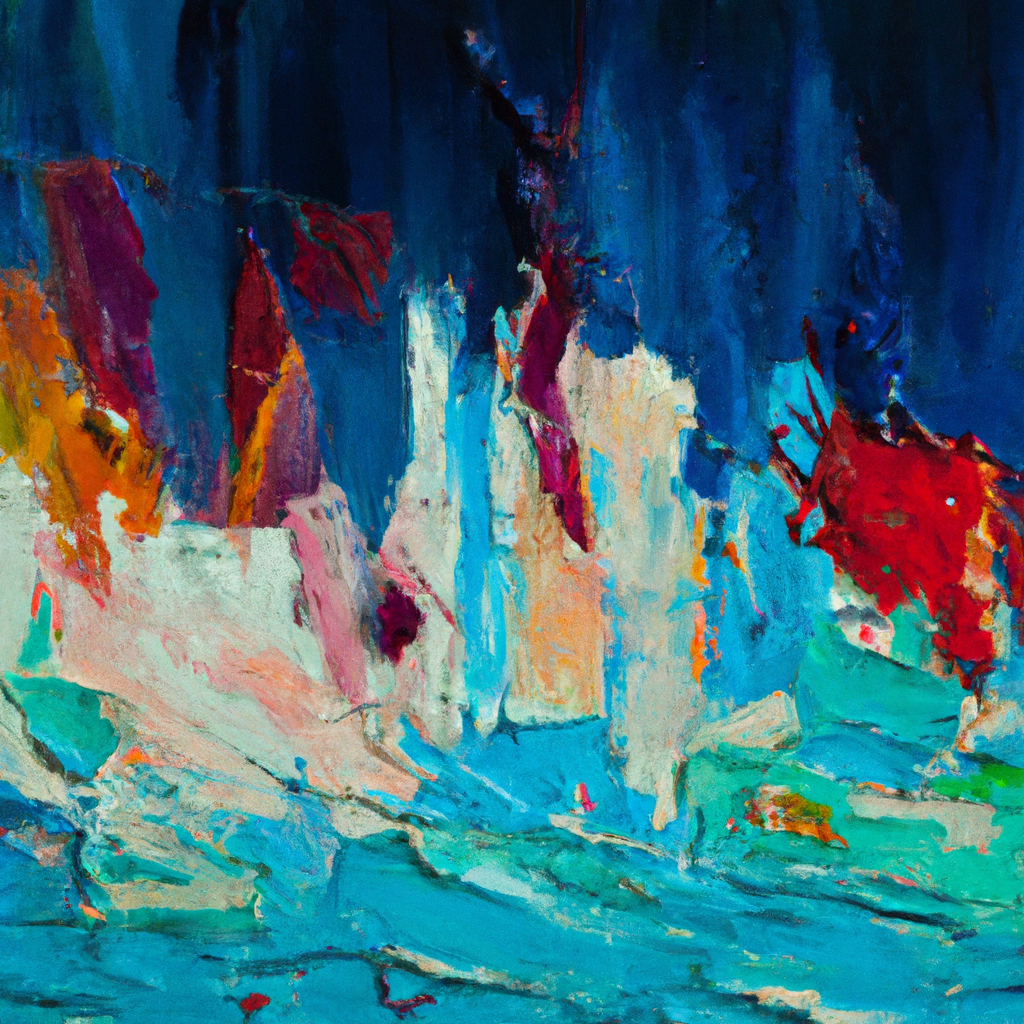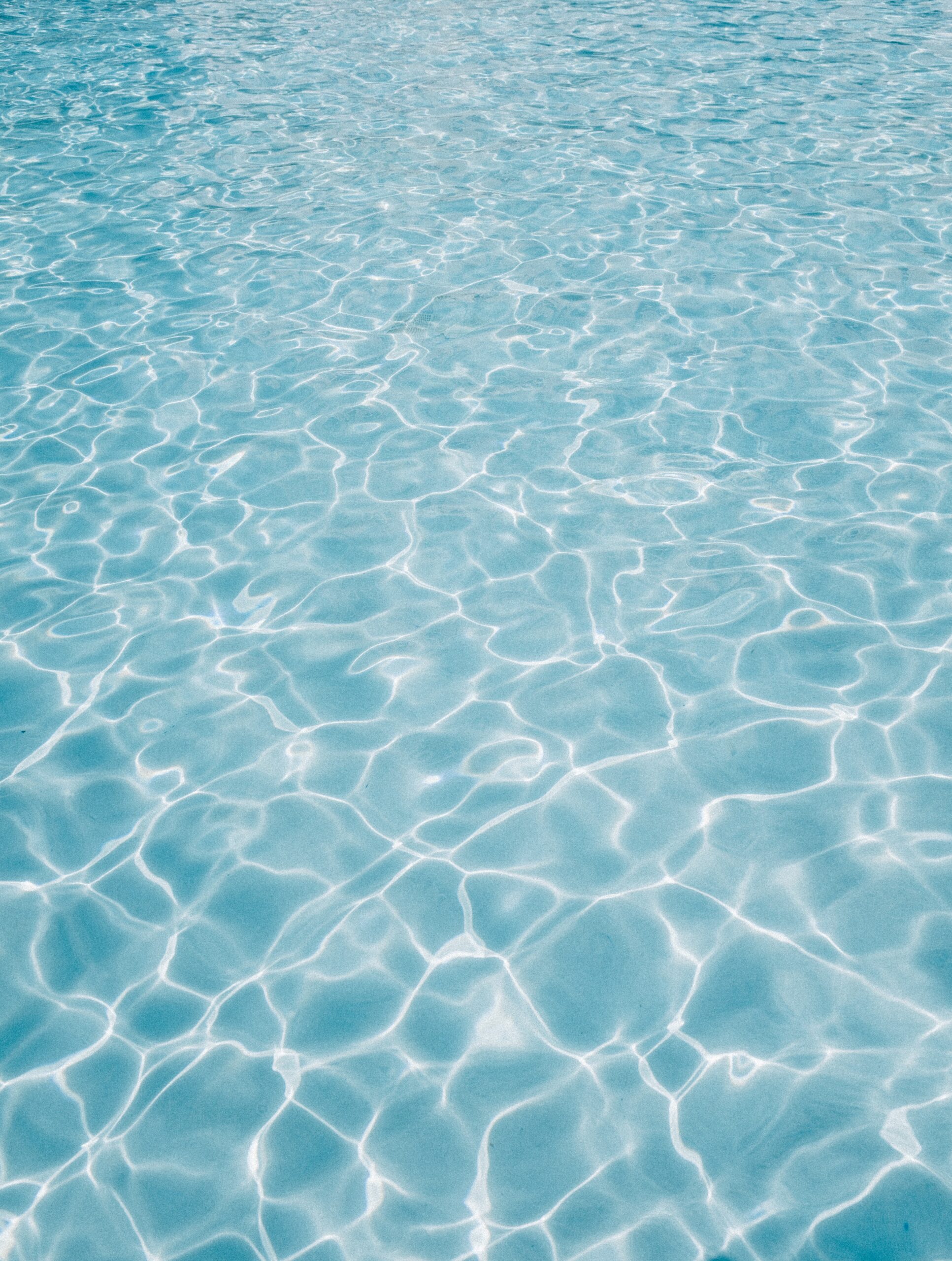Maintaining gouache paint is crucial in order to preserve its quality and longevity. By following a few simple steps, you can ensure that your gouache paint remains vibrant and usable for a longer period of time. This article will guide you through the necessary techniques and precautions to take when it comes to cleaning and storing your gouache paint, as well as provide tips on how to prevent common issues such as drying out or color contamination. With proper maintenance, you can continue to create stunning artworks with your gouache paint for years to come.
Storing Gouache Paint
Gouache paint can be stored properly to extend its shelf life and maintain its quality. Choosing the right containers, labeling and organizing, keeping away from direct sunlight, and avoiding extreme temperatures are essential for storing gouache paint effectively.
Choosing the Right Containers
When selecting containers for storing gouache paint, it is crucial to opt for ones that are airtight and leak-proof. This ensures that the paint remains fresh and does not dry out quickly. Plastic or glass containers with secure lids are ideal for storing gouache paint. It is recommended to use containers specifically designed for storing paints to maintain the paint’s consistency and avoid contamination.
Labeling and Organizing
Properly labeling and organizing your gouache paint containers is a vital step in maintaining an efficient storage system. Clearly label each container with the color name and date of purchase or creation. This helps you identify the paint easily and keep track of its age. Additionally, organizing your containers in a systematic manner, such as by color or brand, allows for easy access and prevents accidental mix-ups.
Keeping Away from Direct Sunlight
Gouache paint should be stored in a location away from direct sunlight. Exposure to sunlight can cause the paint to fade or change color over time. Ideally, store your gouache paint containers in a cool, dark area, such as a cupboard or drawer, to protect them from UV rays. This ensures that the pigments retain their vibrancy and longevity.
Avoiding Extreme Temperatures
Extreme temperatures can negatively affect the consistency and quality of gouache paint. It is important to store gouache paint in an environment with stable temperatures. Avoid storing it in areas prone to high heat or freezing temperatures, such as near radiators or windows. Drastic temperature changes can cause the paint to crack, separate, or become unusable. Maintaining a moderate and consistent temperature helps preserve the paint for longer periods.
Preventing Drying Out
To prevent gouache paint from drying out, it is essential to take the necessary precautions. Closing containers tightly, using moisture-retaining palettes, spraying a fine mist to keep the paint wet, and covering palettes and paints with damp cloths can help maintain the paint’s moisture content.
Closing Containers Tightly
Ensuring that gouache paint containers are tightly sealed after each use is crucial to prevent the paint from drying out. This is especially important for tubes and jars. Residual air in the container can cause the paint to dry and become unusable. Make it a habit to close the containers tightly, double-checking that they are properly sealed before storing them.
Using Moisture-Retaining Palettes
Moisture-retaining palettes, also known as stay-wet palettes, are an effective tool for preventing gouache paint from drying out during painting sessions. These palettes consist of a palette tray with a moistened sponge or paper towel underneath the mixing wells. The moisture from the sponge helps keep the paint on the palette wet and workable for longer periods. Using a moisture-retaining palette is particularly beneficial if you tend to work slowly or need extended paint drying times.
Spraying Fine Mist to Keep Paint Wet
Another method to prevent gouache paint from drying out is to spray a fine mist of water onto the surface of the paint. This helps keep the paint moist and workable. Use a spray bottle filled with clean water and lightly mist the surface of the paint whenever you notice it drying up. Be cautious not to apply excessive water, as it can dilute the paint or make it too runny.
Covering Palette and Paints with Damp Cloths
During breaks or when not actively painting, it is recommended to cover the palette and paints with damp cloths to maintain moisture. This protective layer helps prevent the paint from drying out due to evaporation. Simply place a damp cloth over the palette, ensuring it covers the entire surface, and gently press it against the wells and the paint. This method helps retain the humidity within the palette, keeping the paint in a workable state for longer periods.

This image is property of images.unsplash.com.
Cleaning and Maintaining Brushes
Properly cleaning and maintaining your gouache paint brushes are essential for their longevity and optimal paint application. Rinsing brushes properly, using mild soap or brush cleaner, avoiding excessive water on bristles, and reshaping and drying brushes correctly contribute to maintaining their performance.
Rinsing Brushes Properly
After each painting session or color change, it is important to rinse gouache paint brushes properly. Rinse the brush under a gentle stream of lukewarm water to remove any excess paint. Gently massage the bristles with your fingers, working from the ferrule towards the tip to ensure thorough cleaning. Avoid using hot water, as it can damage the bristles.
Using Mild Soap or Brush Cleaner
For a deeper clean, use a mild soap or brush cleaner specifically formulated for art brushes. Wet the brush and apply a small amount of soap or cleaner to your hand or a brush cleaning pad. Gently work the soap or cleaner into the bristles, using circular motions. Rinse the brush under lukewarm water until the water runs clear. Be sure to remove all soap residue to prevent it from affecting the paint application.
Avoiding Excessive Water on Bristles
When cleaning gouache paint brushes, avoid excessive water on the bristles. Over-soaking the bristles can lead to swelling or splaying, resulting in a compromised brush shape and performance. Rinse the brush thoroughly but avoid submerging the entire brush in water for an extended period. Strike a balance between thorough cleaning and minimal water exposure to preserve the brushes’ integrity.
Reshaping and Drying Brushes Correctly
After rinsing and cleaning, reshape the bristles of your gouache paint brushes to their original form. Gently squeeze out any excess water and reshape the bristles by running your fingers or a clean cloth along them to remove any kinks or bends. Avoid applying excessive pressure, as it can damage the bristles. To dry the brushes, lay them flat or hang them vertically with the bristles pointing downwards. This prevents water from pooling in the ferrule, which can lead to brush damage and mold growth.
Preventing Contamination
To maintain the purity of colors and avoid unwanted contamination, it is important to follow specific practices. Using separate containers for mixing, keeping the palette clean and free of color residue, avoiding the dip-and-wipe method, and using dedicated brushes for each color contribute to preventing contamination in gouache paint.
Using Separate Containers for Mixing
When mixing different colors of gouache paint, it is crucial to use separate containers or wells for each mixture. Mixing colors directly on the palette can result in cross-contamination, altering the desired color. By using separate containers, you ensure that each mixture remains pure and avoid unintended color shifts.
Keeping Palette Clean and Free of Color Residue
Cleaning the palette thoroughly between each painting session or color change is essential for preventing unwanted color residue. Use a palette knife or paper towel to scrape off any excess paint from the palette’s surface. Wipe it clean with a damp cloth or sponge to remove any remaining traces of color. A clean palette ensures accurate color mixing and prevents unexpected color variations.
Avoiding Dip-and-Wipe Method
When working with gouache paint, it is important to avoid the dip-and-wipe method of brush cleaning. This method involves dipping the brush directly into the paint, wiping off the excess paint on the palette’s edge or rim, and then continuing to paint. This practice can introduce unwanted residue and contaminants into the paint, leading to color contamination and compromised paint quality. Instead, dedicate separate brushes for each color to maintain purity.
Using Dedicated Brushes for Each Color
To prevent cross-contamination and preserve the integrity of colors, it is recommended to use dedicated brushes for each individual color. This practice ensures that the paint remains pure and avoids any mixing of colors unintentionally. Having a separate brush for each color also allows for more precise and controlled application of the desired colors.

This image is property of images.unsplash.com.
Avoiding Cross-Contamination
Cross-contamination can occur when using multiple colors with the same brushes or water. To avoid this, it is important to implement certain practices. Avoid double-dipping brushes, use clean water for each color, clean and dry brushes between colors, and utilize palette knives to minimize color mixing.
Avoiding Double-Dipping Brushes
Double-dipping brushes in different colors of gouache paint can lead to cross-contamination. Always wipe the brush clean between colors by gently rubbing it on a paper towel or clean cloth. This helps remove any excess paint and minimizes the risk of undesired color mixing. Consistently using fresh paint from the palette for each color ensures accurate and uncontaminated color application.
Using Clean Water for Each Color
Using clean water for each color is crucial to prevent cross-contamination. When rinsing brushes or diluting paint, be sure to use fresh water for each color. This avoids transferring pigments or residues from one color to another. Utilize multiple water containers or rinse brushes thoroughly to ensure complete removal of the previous color before moving on to the next one.
Cleaning and Drying Brushes Between Colors
Between applying different colors, it is essential to clean and dry brushes thoroughly to prevent color mixing. Rinse the brushes under lukewarm water until the water runs clear, gently massaging the bristles to remove any remaining pigment. After rinsing, reshape the bristles and allow them to dry completely before using them with a different color. This practice guarantees that no residual pigments remain, minimizing the risk of color contamination.
Using Palette Knives to Minimize Mixing
Palette knives can be used effectively to minimize color mixing during the painting process. When mixing colors or applying them to the palette, use palette knives instead of brushes. This allows for more precise control and avoids the risk of unintentional color blending. Palette knives also make it easier to scrape off excess paint and maintain a clean palette surface.
Handling and Protecting Artwork
Proper handling and protection of gouache artwork ensure its longevity and preservation. Using proper fixatives or varnishes, choosing archival paper or surfaces, avoiding touching artwork with bare hands, and storing artwork in protective sleeves or frames contribute to maintaining its quality over time.
Using Proper Fixatives or Varnishes
To protect gouache artwork from smudging or damage, it is advisable to apply a proper fixative or varnish. Fixatives are particularly useful for preventing smudging, especially if the artwork will be handled frequently or displayed without glass protection. Select a fixative specifically designed for gouache paint and apply it according to the manufacturer’s instructions. Varnishes, on the other hand, provide a protective layer and enhance the artwork’s color vibrancy. Choose a varnish specifically formulated for gouache paintings to ensure compatibility.
Using Archival Paper or Surfaces
Choosing archival paper or surfaces for creating gouache artwork is essential for long-term preservation. Archival materials are acid-free and have a higher resistance to fading or yellowing over time. Acid-free watercolor paper or specially designed gouache paper is recommended for creating gouache paintings. These papers are specifically formulated to withstand the pigments and binder of gouache paint, ensuring the artwork’s longevity.
Avoiding Touching Artwork with Bare Hands
To prevent damage or contamination, it is important to avoid touching gouache artwork with bare hands. The natural oils and residues present on the skin can transfer to the artwork, leading to discoloration or smudging. Wear clean, lint-free gloves when handling or displaying gouache paintings. Alternatively, use clean, acid-free tissue paper or handling tools to minimize direct contact and preserve the artwork’s integrity.
Storing Artwork in Protective Sleeves or Frames
When not on display, it is important to store gouache artwork in protective sleeves or frames to shield it from dust, moisture, and physical damage. Protective sleeves made of acid-free and archival materials are widely available and provide a barrier against external elements. Alternatively, framing the artwork under glass with a mat or spacer provides a protective enclosure. Ensure that the framing materials are acid-free and provide adequate ventilation to prevent moisture buildup.

This image is property of images.unsplash.com.
Preventing Mold and Mildew
Gouache paint and brushes are susceptible to mold and mildew growth if not stored properly. To prevent this, it is important to allow paint and brushes to dry thoroughly, avoid damp or humid storage areas, discard contaminated or moldy paints, and use anti-fungal additives when necessary.
Allowing Paint and Brushes to Dry Thoroughly
After each painting session, it is crucial to allow gouache paint and brushes to dry thoroughly before storing them. Lay out the paint on the palette to air-dry, ensuring there is no moisture before closing the container. Brushes should be hung upside-down or laid flat with the bristles pointing downward to facilitate drying and prevent water accumulation in the ferrule. Adequate drying time prevents mold and mildew growth, ensuring the longevity of both the paint and brushes.
Avoiding Damp or Humid Storage Areas
Storing gouache paint and brushes in damp or humid areas can promote mold and mildew growth. Moisture in the air can be absorbed by the paint or bristles, creating an ideal environment for fungal growth. Choose a storage area that is dry, well-ventilated, and free from excessive humidity. Avoid storing gouache paint and brushes in basements, bathrooms, or areas prone to water leaks or condensation.
Discarding Contaminated or Moldy Paints
If gouache paint becomes contaminated or moldy, it is crucial to discard it immediately. Mold can spread rapidly and affect the entire container if not addressed promptly. Inspect your paint regularly for any signs of mold growth or unusual discoloration. If you detect contamination or mold, dispose of the affected paint responsibly and thoroughly clean the container before using it again. Do not attempt to use or revive moldy gouache paint, as it may compromise the quality of your artwork.
Using Anti-fungal Additives to Paint
In high-humidity climates or areas prone to mold and mildew growth, using anti-fungal additives in the gouache paint can provide an extra layer of protection. These additives are specifically formulated to inhibit mold and mildew growth in water-based paints. Follow the manufacturer’s instructions on the proper usage and ratio of the anti-fungal additive to ensure the paint remains free from fungal contamination.
Reviving Dried Gouache Paint
If gouache paint dries out, there are methods to revive it for future use. Adding water gradually, using a palette knife to mash and mix, straining the paint to remove lumps, and preserving the revived paint are steps to effectively revive dried gouache paint.
Adding Water Gradually
To revive dried gouache paint, it is important to add water gradually to avoid over-diluting the paint or creating a runny consistency. Start by adding small amounts of water at a time and mix it thoroughly with a palette knife or brush. Add water until the desired consistency is achieved. Be patient and avoid rushing the process, as adding too much water at once can alter the paint’s pigmentation and overall performance.
Using Palette Knife to Mash and Mix
When reviving dried gouache paint, use a palette knife to mash and mix the paint. Start by breaking up the dried paint into smaller pieces and then gently mash it against the palette’s surface. Use a scraping motion to incorporate the added water into the paint and break down any lumps or clumps. Continuously mix and mash the paint until it reaches a smooth and workable consistency.
Straining Paint to Remove Lumps
If the revived gouache paint still contains lumps or impurities, it is beneficial to strain the paint before using it. Place a clean piece of mesh or a fine sieve over a clean container and pour the paint through it. The mesh or sieve will catch any remaining lumps or impurities, ensuring a smooth and consistent paint consistency. Remove the strained paint from the mesh or sieve and transfer it back into a clean container for convenient use.
Preserving Revived Paint for Future Use
Revived gouache paint can be preserved for future use by storing it properly. Transfer the paint into an airtight container, ensuring that it is tightly sealed to prevent moisture loss. Label the container with the paint’s color name and date of revival to keep track of its age. Store the container in a cool, dark area to maintain the paint’s freshness. Regularly check the paint’s consistency and quality before using it in future artwork.

Best Practices for Gouache Paint
Following certain best practices when working with gouache paint can enhance your painting experience and ensure optimal results. Using paint in thin layers, allowing sufficient drying time between layers, cleaning the palette regularly, and opting for quality gouache paint brands contribute to a successful painting process.
Using Paint in Thin Layers
To achieve the best results with gouache paint, it is recommended to apply it in thin layers. Thin layers of paint dry faster and allow for more control over color application, blending, and texture. Build up the desired colors and values gradually with multiple thin layers, allowing each layer to dry before applying the next. This technique ensures the colors stay vibrant and the overall composition remains well-defined.
Allowing Sufficient Drying Time Between Layers
Gouache paint requires sufficient drying time between layers to avoid smudging or mixing of colors. Allow each layer to dry completely before applying subsequent layers or adding details. Thicker or saturated areas of paint may require longer drying times. Patience and proper drying time ensure that the layers remain distinct and do not unintentionally blend or smudge.
Cleaning Palette Regularly
Regularly cleaning your palette during painting sessions is essential for maintaining accurate color mixing and preventing unwanted color shifts. Use a clean palette knife or paper towel to remove any excess paint and wipe the palette’s surface clean. Inspect the mixing wells for any dried or contaminated paint and remove it promptly. A clean palette provides a fresh working space and ensures accurate color representation.
Using Quality Gouache Paint Brands
Using quality gouache paint brands is crucial for achieving optimal results and ensuring the longevity of your artwork. High-quality gouache paints contain a higher concentration of pigments, resulting in vibrant and long-lasting colors. They also have better binder properties, allowing for ease of application and layering. Invest in reputable brands that prioritize color permanence, lightfastness, and adherence to archival standards.
Frequently Asked Questions (FAQs)
Can you mix gouache with other paint types?
Gouache paint can be mixed with other water-based paint types, such as acrylic or watercolor, to create unique effects or colors. However, it is important to note that gouache has different characteristics and opacity levels compared to other paints. Consider experimenting first on a separate surface before incorporating mixed media techniques into your artwork. Additionally, ensure compatibility between the different paint types and follow any specific instructions or precautions recommended by the manufacturers.
Can gouache paint be used on canvas?
While gouache paint is traditionally used on paper or illustration board, it can be applied to canvas as well. However, specific considerations should be made to ensure proper adhesion and longevity. It is recommended to prepare the canvas with a suitable primer or sizing to create a surface that facilitates gouache paint application. Additionally, using thicker gouache paint or incorporating additional binders may be necessary to enhance adherence to the canvas. Experimentation and testing on a small section of the canvas before creating a full-sized artwork is advisable.
Can you use gouache paint for outdoor murals?
Gouache paint is not the most suitable choice for outdoor murals due to its water-soluble nature and lack of durability against exposure to weather elements. Gouache paint can easily be affected by rain, UV rays, or extreme temperature fluctuations, leading to color fading, cracking, or degradation. For outdoor murals, it is recommended to use permanent or weather-resistant paint types, such as acrylics or specialized outdoor mural paints. These paints are designed to withstand the harsh outdoor conditions and provide long-lasting results.
How long does gouache paint last?
The longevity of gouache paint largely depends on factors such as storage conditions, exposure to light and humidity, and the quality of the paint itself. When stored properly in a cool, dark environment with stable temperatures, gouache paint can last for several years or even decades. However, the vibrancy and performance of the paint may deteriorate over time. It is advisable to check the consistency and quality of the paint before each use and discard any paint that shows signs of mold, contamination, or significant degradation.




